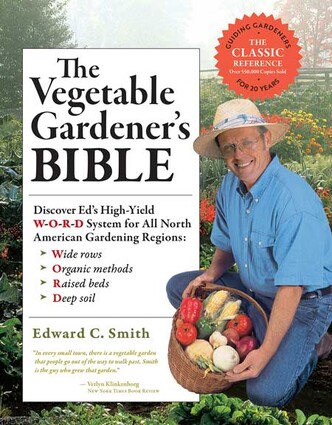The Quarantine List
Last updated 4/21/2020 at Noon
Editor’s note: The Nugget continues its series of recommendations for reading and viewing during the pandemic shutdown.
“The Vegetable Gardener’s BIBLE” by Edward C. Smith.
I’ve read my fair share of gardening books (during college I worked at a delightful garden store in downtown Seattle where we were encouraged to borrow the books) and this is the one that I open again and again — for the last 10 years!
In this 350-page reference book complete with full-color photos of plants, pests, and processes, Ed shares his WORD approach to successful gardening in America’s northern regions: Wide rows, Organic methods, Raised beds, Deep soil.
My family’s little garden here in Sisters is based on his methods and we do have successes (and plenty of failures since this is Central Oregon and nothing about gardening is a sure thing). Like most things in life, you need to consider your garden’s success over the long term, not by an individual crop or season. This book shines here as it takes you through nurturing soil health, crop rotations, composting, and more.
The book is divided into three parts that cover planning your garden for higher yields with less work, how to nurture healthy soil and deal with garden pests, and a pretty comprehensive directory of vegetables and herbs.
Starting seeds indoors has been on my agenda recently (see Newspaper pots are eco-friendly, easy on the wallet). While it really is doable for anyone, understanding how soon to get seeds started before the last frost date, what temperatures different seeds germinate at, and when to fertilize your seed starts will greatly increase your success. Ed’s book has you covered with all this information.
Crop rotation is a great topic to read up on. Did you know that when you rotate your crops around the garden from year to year in a planned manner you can reduce incidence of disease and pests since many eggs, larvae, and soilborne diseases spend winter in the soil? When you strategically change locations of your crops, the nuisances are less prolific because their preferred food or host isn’t readily available.
Folk wisdom says that “a very good gardener grows soil” because that is the keystone that takes seeds to harvest. Good garden soil is a collection of the myriad nutrients plants need for healthy growth as well as the worms, beetles, bacteria and fungi that help create the living ecology where plants thrive. This past weekend as I worked on preparing our garden beds it was thrilling for me and my almost-four-year-old to spy all the worms, beetles, and spiders buried in the ground and hiding under rocks.
Kohlrabi made its way into my garden lineup after reading about it in this book. As with all of the vegetables in the directory section, there are recommendations for choosing the best site, how to sow and grow it, and how to harvest and store it. I like to grow kohlrabi because you can eat young leaves as salad greens, the full grown vegetable is a great substitute for cabbage (without the insect troubles often associated with cabbage), and it stores well.

















Reader Comments(0)